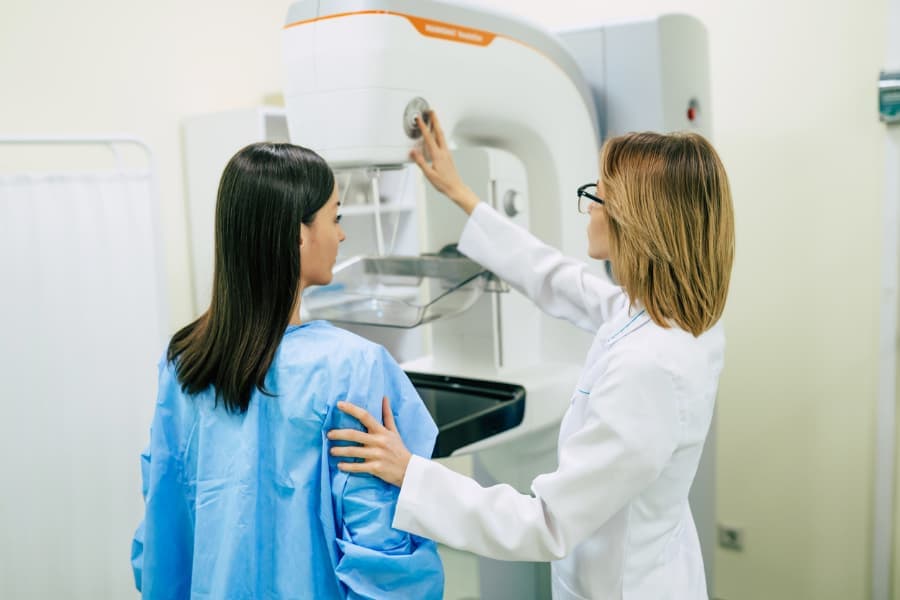While most women know they need to get a mammogram at a certain age, they may not have heard of a breast MRI. While both are diagnostic tools, a breast MRI and a mammogram serve contrasting functions in women’s health care. Here, Richmond University Medical Center explains how these tests are used and how they differ.
About Mammography
A mammogram is an X-ray imaging procedure that produces pictures of a patient’s breast tissue. Physicians use mammography for breast cancer screening and to detect any abnormalities in the breast tissue.
When Should A Patient Get A Mammogram?
Mammograms are used for routine screenings and as a diagnostic tool. Most female patients should have an annual mammogram starting at age 40. Patients may require a diagnostic mammogram if they have symptoms such as:
- Breast pain
- An indentation or lump in the breast
- Discharge from the nipple
Patients with a family history of breast cancer may need to begin annual mammograms before the age of 40.
Preparing For A Mammogram
A mammogram is a routine imaging test. The entire appointment may take more than an hour because of medical history paperwork and preparation, but the actual imaging takes only a few minutes. Before the exam, a patient will need to undress from the waist up and put on a hospital gown. The patient stands in front of the mammography machine, which takes images of one breast at a time. A mammography technologist will position the patient and take the X-ray images.
A typical mammogram will include images of each breast at different angles. Once a mammogram is complete, the patient can resume normal activities and return to work or school. Within a few days, a physician will contact the patient with the results of their exam.
About Breast Magnetic Resonance Imaging (MRI)
A breast MRI is another type of diagnostic imaging procedure. Unlike a mammogram, which uses X-rays, a breast MRI uses radio waves and magnetization to produce an image.
When Should A Patient Get A Breast MRI?
A breast MRI typically is used after a patient has been biopsied for breast cancer and received a positive diagnosis. Breast MRI also may be used in conjunction with mammography, including:
- To diagnose physical abnormalities identified on a mammogram
- To determine if a breast lump is a cyst filled with fluid or a solid mass
- To detect breast cancer in high-risk patients, such as women with a BRCA1 or BRCA2 mutation
- To examine patients who have breast implants or scar tissue that might lead to an inaccurate mammogram
- To check if a breast implant is leaking
In patients who have already been diagnosed, a breast MRI may be used to determine the location and size of tumors before breast cancer treatment begins. Breast MRI also may be utilized in preparation for surgery, as an MRI can help determine if a mastectomy or lumpectomy would be more effective.
According to Johns Hopkins Medicine, there is a 10% chance that women with cancer in one breast will develop cancer in their other breast. A breast MRI also may help diagnose early signs of cancer in the patient’s opposite breast.
Preparing For A Breast MRI
An MRI takes a bit more time than a mammogram, but it is a non-invasive, routine examination that can be done in an outpatient setting. Unlike a mammogram, a breast MRI uses contrast dye, so a patient will need to get an injection before the imaging starts.
During the imaging process, the patient lies face down on a table that then moves into the MRI machine. The patient will need to remain very still and may need to hold their breath during certain parts of the test to produce high-quality images. The MRI machine will take multiple sets of images. The whole test typically takes less than an hour.
Get Breast Cancer Prevention Care
Richmond University Medical Center’s Breast and Women’s Center uses state-of-the-art imaging technology to screen and diagnose patients. Imaging services at Richmond University Medical Center include:
- 3-D mammography
- Breast MRI
- Breast ultrasound
- MRI biopsy
- Stereotactic and ultrasound-guided breast biopsy
To schedule a mammogram or learn more about breast cancer care on Staten Island, NY, contact us today.




